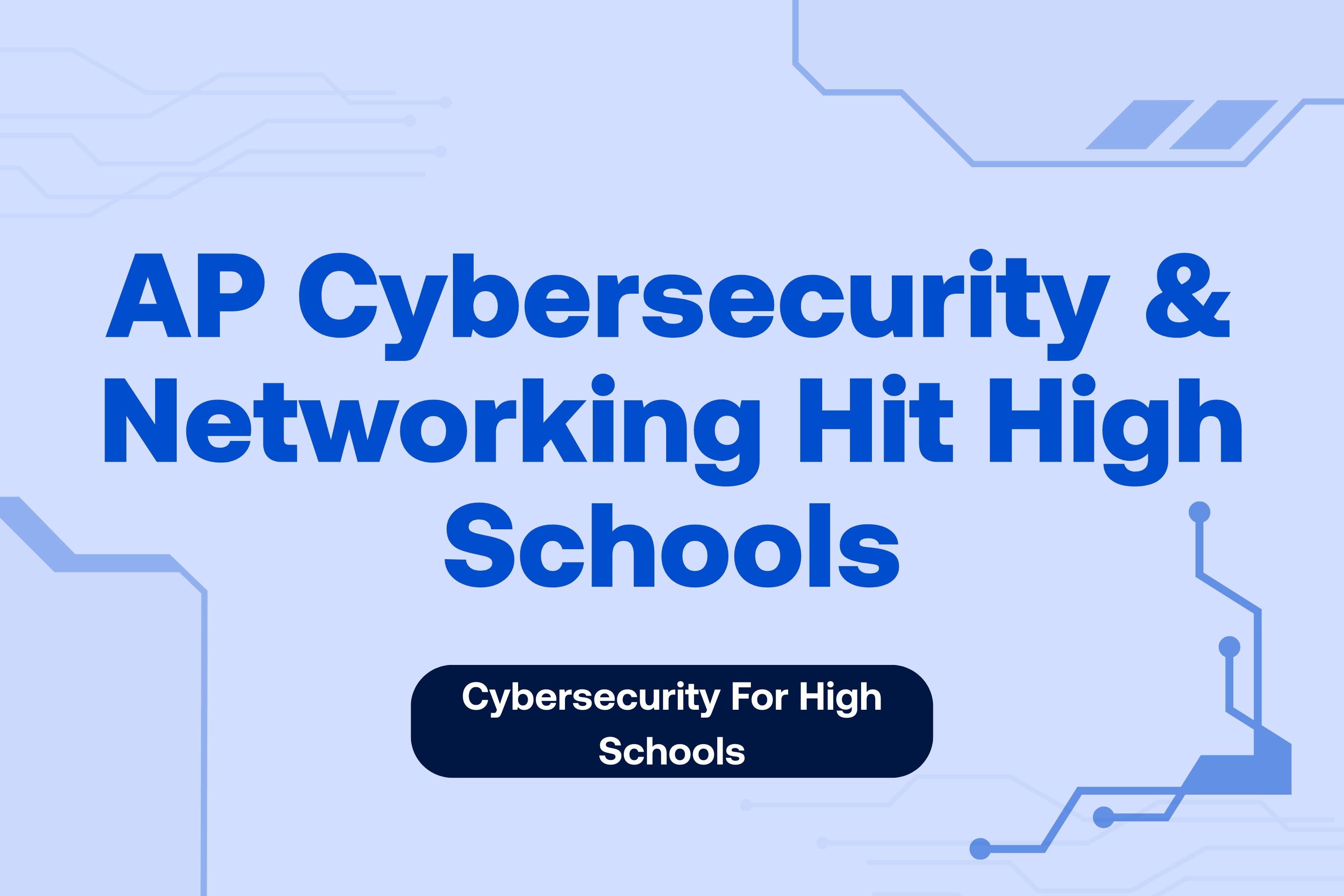What’s new (and why it matters)
- Two career-connected AP pilots (Cybersecurity, Networking) with teacher training in summer 2025, course launch in Aug/Sept, and pilot exams in May 2026. apcentral.collegeboard.org
- Credential focus: AP Networking confers an employer-endorsed credential for students who complete the yearlong course and earn a qualifying score. Explicitly aligned to NICE/NIST frameworks and industry pathways. apcentral.collegeboard.org
Why districts care: Turning students into informed users and future technicians reduces risky clicks, improves peer-to-peer norms, and creates a local pipeline for summer help desks, internships, and entry-level roles.
A 60-day playbook for districts launching classes
Days 0–15 — Connect curriculum to ops
- Name an IT liaison for the teacher; schedule a monthly sync.
- Publish a one-page “Student Cyber Squad” charter for low-risk, supervised tasks (no production data).
Days 16–30 — Build safe, isolated sandboxes
- Stand up a segregated lab network and simulated datasets for exercises.
- Approve a short list of industry tools (packet capture, logging, vuln scanners) for the lab only.
Days 31–60 — Measure and show impact
- Run a district-wide micro-training + phishing simulation and have the class analyze anonymized patterns.
- Present a board update: training completion %, simulation results, and the student squad’s first fixes.
Where CyberNut fits
Districts pairing AP pilots with CyberNut are accelerating setup and proving value quickly:
- Curriculum alignment kits: Real K–12 cases and anonymized phishing data to ground classroom lessons.
- Student-extendable micro-training & simulations: Same platform staff uses, with student-safe tracks.
- Incident-response playbooks (school-friendly): Tabletop scripts that mirror what IT will actually do.
- EdTech/AI vetting guidance: Guardrails so class projects don’t create “shadow IT.”
Guardrails to set on day one
- Privacy first: Only simulated data in class; never touch live SIS/LMS records.
- Scope control: Student tasks stay on isolated networks; written instructor/IT sign-off for any change.
- Teacher upskilling: Ongoing PD on new tactics (AI-polished phish, deepfakes) keeps lessons current.
- Evidence habit: Track training, sims, and lab outcomes use them in audits and insurance reviews.
Bottom line
AP Cybersecurity and AP Networking give districts a timely lever: educate students and elevate security at once. Early movers like Harrison Central show how a classroom launch can become an operational win, if districts wire the class into verification habits, segmented labs, and routine drills. The state of play in 2025: credentials for students, fewer surprises for IT, and cleaner audit trails for everyone.
Editor’s note: Pilot timing and credential details come from AP Central (College Board). Local launch details reflect recent Mississippi coverage of Harrison Central’s program.
